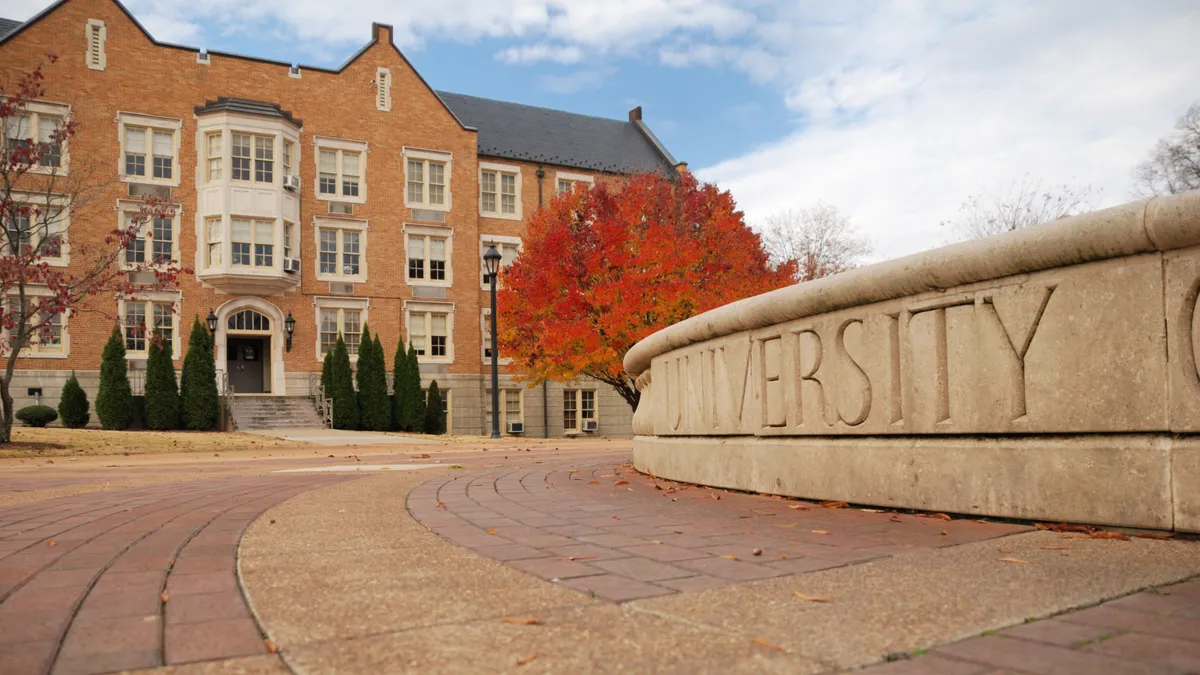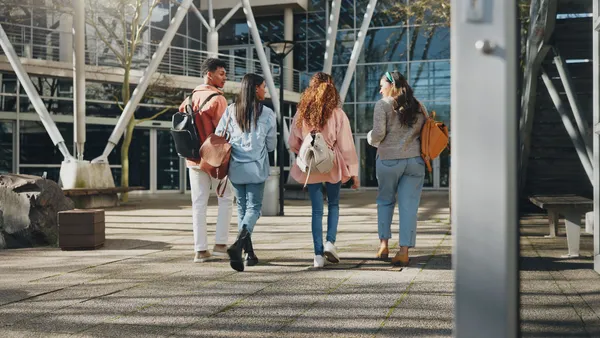Dive Brief:
- The pace at which students are finishing college continues to slow, according to new data showing the six-year graduation rates of undergraduate learners who started in the fall of 2014.
- Slight decreases in completion rates among traditional-age and community college students drove the slowdown, according to the National Student Clearinghouse Research Center, which examined rates for first-time students, including those who transferred.
- The pandemic has delivered a blow to undergraduate enrollment, particularly at community colleges. Completion rates could suffer if that trend continues among students who are already enrolled.
Dive Insight:
The national six-year completion rate rose 0.3 percentage points in this year's report, compared to a 1.4-point gain recorded last year and covering learners who started in 2013. The pace of growth has slowed in recent years, though the changes have been slight.

Not all students and institutions are experiencing the trend in the same way.
The six-year completion rate fell slightly for traditional-age students, from 64.1% for the 2013 cohort to 64%. This group — which the report classifies as those age 20 and younger — makes up more than three-quarters of beginning college students.
Older students, meanwhile, saw their completion rates improve from the prior year across every institution type but community colleges.

Community colleges reported a 0.5-percentage-point decrease in completion after two years of growth, with declines among all age groups. The drops at two-year schools were steepest among Black and Hispanic students.
However, completion rates for Black students at public four-year colleges improved by one percentage point, compared to a 0.5-point gain for White students. And Black students, particularly men, had the biggest decrease in stop-out rates, the report found.
The completion data was collected through June 2020. Although that overlaps with the pandemic, prior Clearinghouse research found the crisis had minimal impact on enrollment during spring 2020.
Still, fewer undergraduates are attending U.S. colleges this fall according to preliminary data, and two-year public schools have taken the biggest hit. If that trend continues among students who are already enrolled, completion rates could suffer, said Doug Shapiro, executive director of the Clearinghouse Research Center.
He also pointed out a decrease in the eight-year completion rate, which is more akin to a total completion rate than the six-year look. While the change is small and occurring just in one year (from 2011 to 2012), he said, it could suggest students are "falling off the radar of institutional support" after six years.
"If anything, we would expect (the pandemic) to increase times to degree for current students," he said. If colleges aren't taking that into account and are focusing just on the six-year rate, he continued, "more of these students are likely to slip through the cracks."












